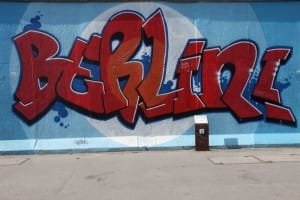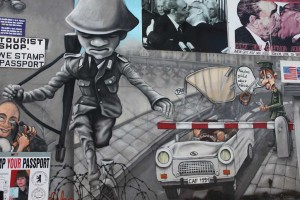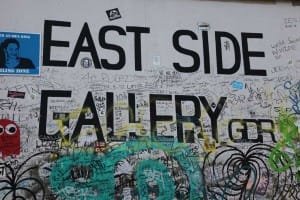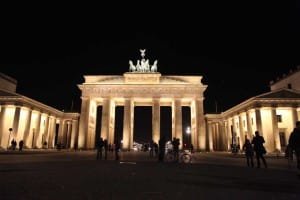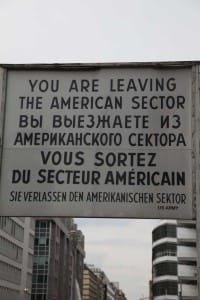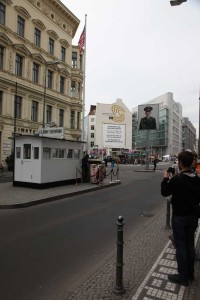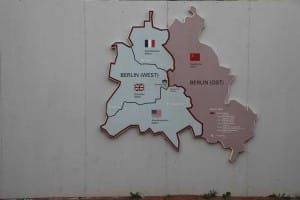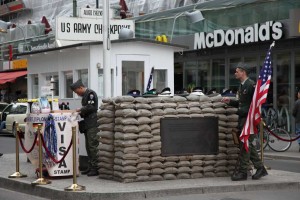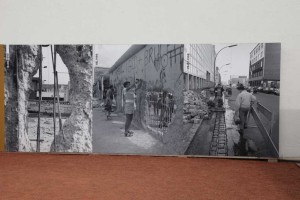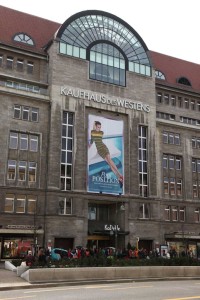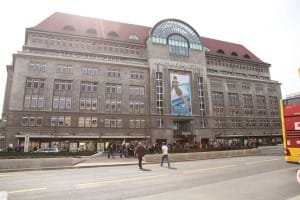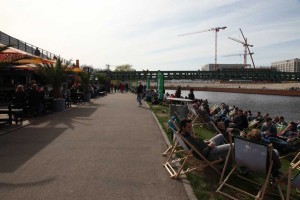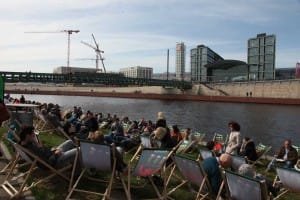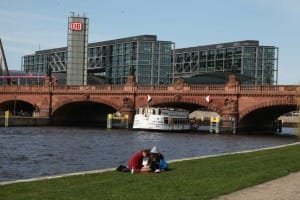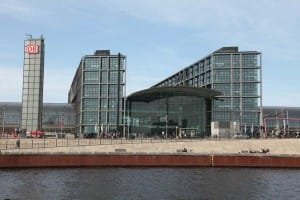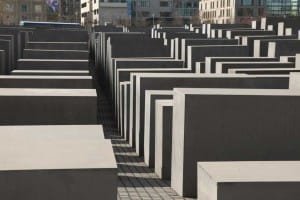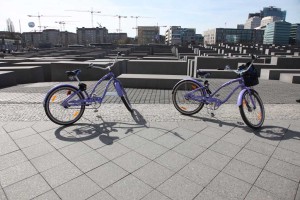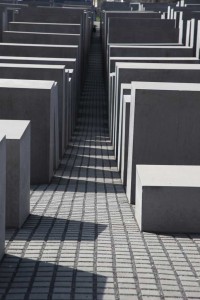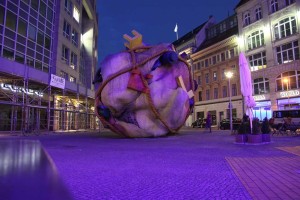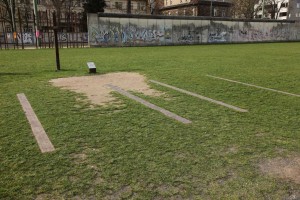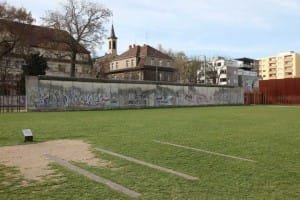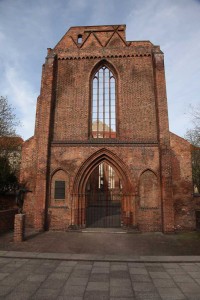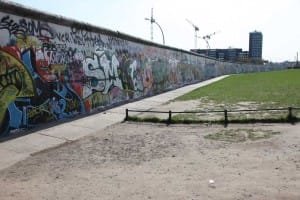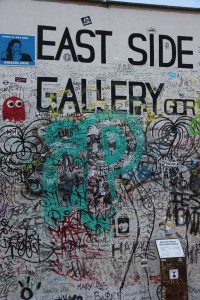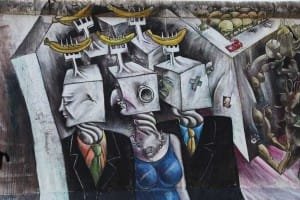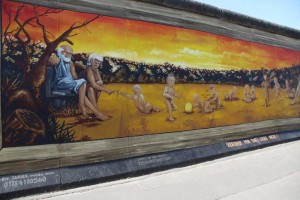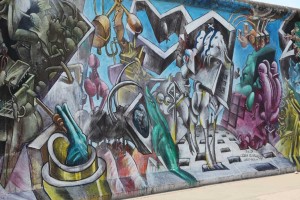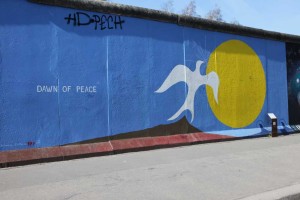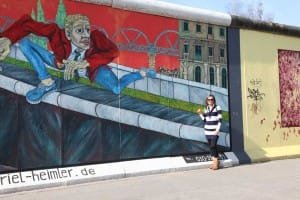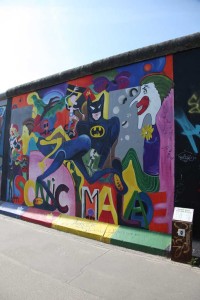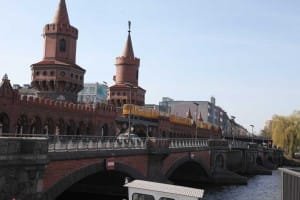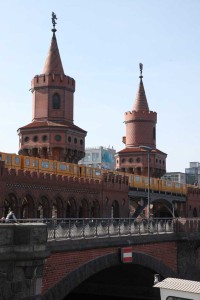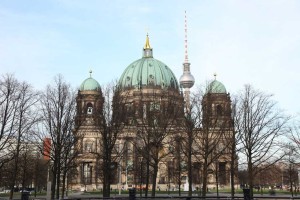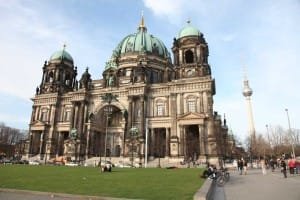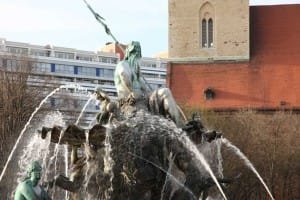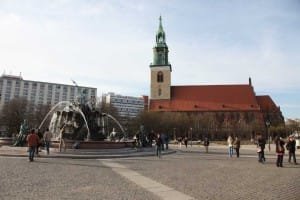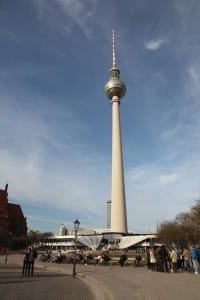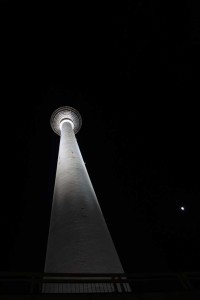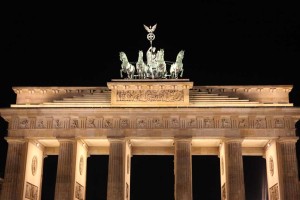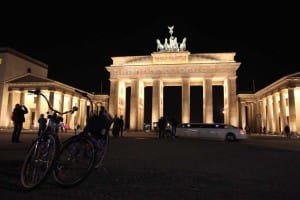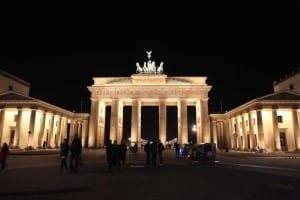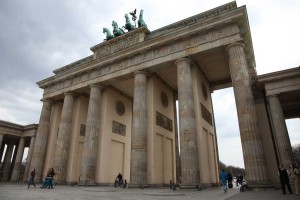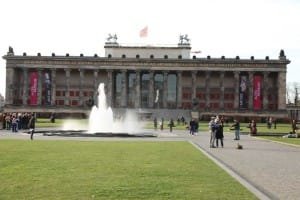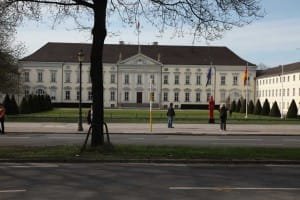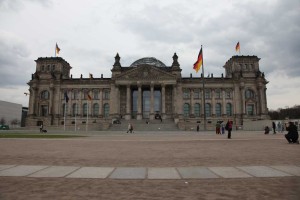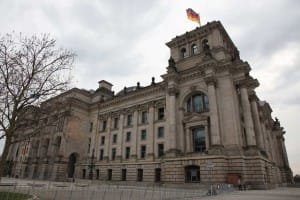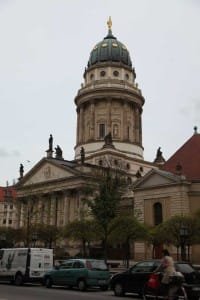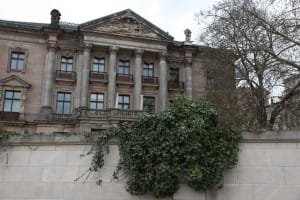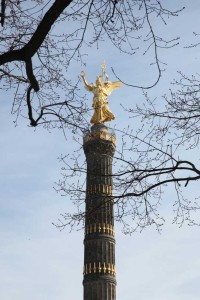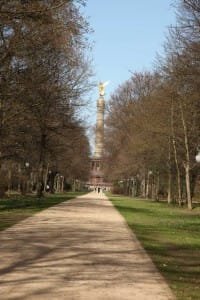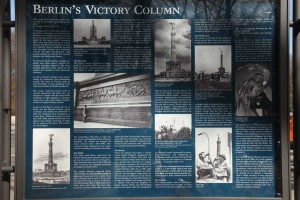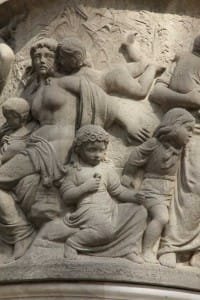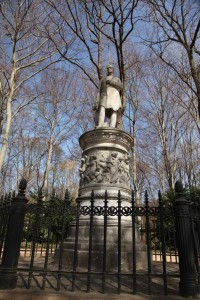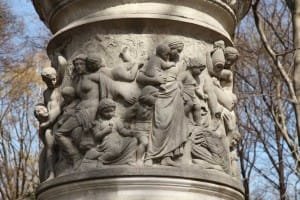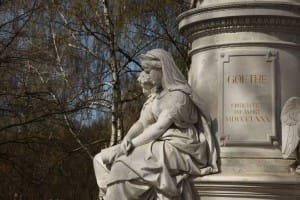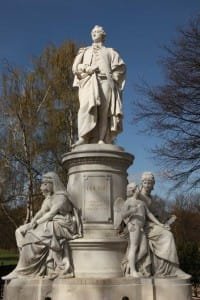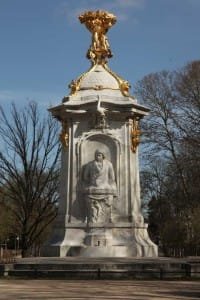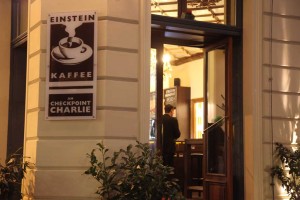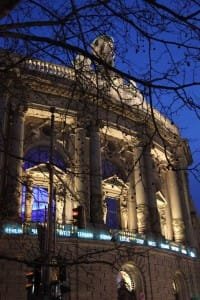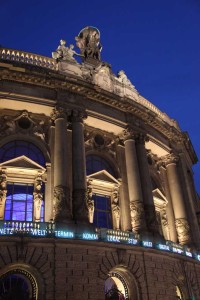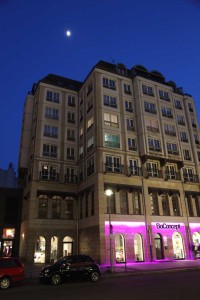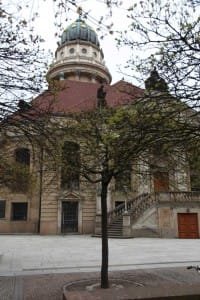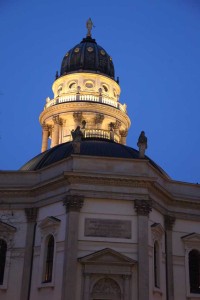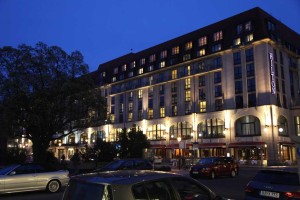A city known for its major historic events, science, architecture, painting, cinema, government and artistic style. During my visit to Berlin I learned and discovered the city’s rich wealth of culture, history, entertainment, along with its old and modern architecture. The old mixed with new, makes the city fascinating, educational and entertaining.
I choose to rent a pedal bike during my stay in Berlin. I soaked up the Capital City’s history and culture cycling the well-marked streets, paths and parks. Socializing with local Berliners and other foreigners throughout the cities several beer gardens, parks, attractions and urban cafe’s.
Several signs of the many historic events taken place over decades and centuries are noticeable. The Thirty Year War between 1618 and 1648 devastated Berlin. Napoleon entered Berlin through the Brandenburg gate after the Battle of Jena-Auerstedt (1806). The Industrial Revolution transformed Berlin during the 19th century. The city’s economy and population expanded dramatically, Becoming the main railway hub and economic centre of Germany. The end of World War I suburban cities, villages, and estates around Berlin expanded. Berlin had a population of around four million at this time. Though the capital city had its political issues due to economic uncertainties, it becomes a renowned location during the Roaring Twenties. Berlin was known as a major world capital. With its leaders in science, the humanities, city planning, film, higher education, government, and industries.
Albert Einstein was awarded the Nobel Prize in Berlin for Physics in 1921. In 1933, Adolf Hitler and the Nazi Party came to power devastating Berlin’s Jewish community. During World War II, large parts of Berlin were destroyed in air raids (1943-1945) and during the Battle of Berlin. On April 30th, 1945 Hitler committed suicide in Berlin as the red army was approaching. Berlin’s West & East were split in 1945. East Berlin remained the capital of Eastern Berlin. The Capital for the West was moved to Bonn. The Cold War which began around 1947 and continued till 1991. The Berlin Wall separated East & West from 1961-1989.
Around 4 p.m., August 15 1961 two days after East Germany closed off its border with the Berlin Wall 19-year old Hans Conrad Schumann was guarding the construction of Berlin Wall jumped the barbed wire fence that marked the Wall in its early stages of construction. With his Kalashnikov slung over his shoulder as the people on the western side shouted Komm über! (“come over”), and was driven away at high speeds by an awaiting West Berlin police car.
Schumann later settled in Bavaria and after the fall of the Berlin Wall he returned to his birthplace in Saxony. His parents, brothers and sisters did not welcome him on his return and Schumann was shunned by his hometown for what he had done. Schumann eventually hanged himself in 1998.
The famous photo capturing Schumman’s escape was taken by 19-year-old photographer Peter Leibing, which hit the West Berlin tabloids in hours, and made the front page of the Bild. Peter Leibing only arrived in Berlin that morning from Hamburg, and had been tipped off that an East German soldier had signaled to spectators on the West Berlin side of the barbed wire barrier that he was going to make a break.
“I had him in my sight for more than an hour. I had a feeling he was going to jump. It was kind of instinct. … I had learned how to do it at the Jump Derby in Hamburg. You have to photograph the horse when it leaves the ground and catch it as it clears the barrier. And then he came. I pressed the shutter and it was all over.”
His photo — taken ironically with an East German Exacta camera as Schumann threw away his rifle — became an enduring image of the Cold War. The camera had no motor-drive and it was the only image he had time to shoot, although the next frame was that of Schumann when he got out of the police car. The main photo won the Overseas Press Club Best Photograph award for 1961.
* In the early days of the divided Berlin, West Berlin firemen waited at Bernauerstraße with safety nets for people who would jump out from the apartment buildings in the Soviet sector into the street which was in the French sector. Less than a month after Schumann escape, the East German Volkspolizei moved in with workmen to seal up doors and windows and ordered 2,000 residents to leave their homes. Later the buildings themselves were demolished to create a fire-zone. Despite increased security, Bernauerstraße became the scene of the most successful escape attempt, when in October 1964, fifty-seven people escaped through a 145-metre tunnel, dug by students from a disused bakery on the street.
I remember being a young girl sitting in front of our television with my parents watching the news about the falling of the Berlin Wall. Having several emotions well I watched the people coming together on TV. People that had been divided by the wall for 30 years. Families & friends split, not having the freedom to see each other. Happy for the Easterners freedom, though a sadness that their freedom was ever taken away. Many people lost their lives trying to escape. This being one of my first moments of feeling gratitude for my birth place, family and life. During my visit to the city 24 years later, learning in more detail of the many that lost their lives, the darkness that really existed for many people, along with the changes that came with the falling of the Berlin Wall left me feeling more grateful & appreciative.
Checkpoint Charlie
The American sector between West and Eastern Germany during the cold war. On August 13, 1961 boarders were closed between Western and Eastern Europe. On this day a barbed-wire fence was put into place by the East Germans that first marked the Berlin wall separating West and Eastern Berlin. Two days later on August 15th, 1961 police and army engineers started to construct the permanent concrete wall. Ten days after the closure of the border only diplomats and the military personnel of Western powers could cross into East Berlin. The Western Allies referred to the 3rd crossing point as “Checkpoint Charlie”. The best-known Berlin Wall crossing point between West and Eastern Berlin during the cold war. Checkpoint Charlie was located on Friedrichstrasse in Berlin. There were two other Checkpoints “Helmstedt” (West German-East German border) and “Dreilinden” (West Berlin and East Germany border.) Checkpoint Charlie remained an active checkpoint crossing till it closed June 22, 1990. The former Allied guardhouse’s are now in the Allied museum. A copy of the American guardhouse “Checkpoint Charlie” was constructed August 13, 2000 in the original crossing point which you can visit today on Friedrichstrasse.
KAUFHAUS DES WESTENS (KaDeWe)
The largest department store in Continental Europe with 40,000 to 50,000 visitors a day. You will find a rich selection of articles available over the 7 floors in this grand department store along with cafe’s, restaurants, Champaign bars and beer bars serving tasty chilled German beers. The atrium Cafe located on the top floor is designed with style. It is a wonderful place to take a break and relax between shopping for international brands, luxury gifts or exclusive articles over the 60,000 square meter of selling space.
There are several beautiful parks, cafe’s in several different hip districts and river side beer gardens to Kick back and chat with friendly locals and other foreigners.
The new and modern glass train station known as Berlin’s Hauptbahnhof station was opened May 26th, 2006 and began service two days later. It is located in the center of Berlin along side of the Spree River.
The Holocaust Memorial, is a memorial in Berlin to the Jewish victims of the Holocaust. The Memorial was designed by architect Peter Eisenman and engineer by Buro Happoid.
The memorial was completed December 15th, 2004 and inaugurated on May 10th, 2005, sixty years after the ending of World War II. It is located in the Friedrichstadt neighbourhood one block south of the Brandenburg Gate.
The East Side Gallery is the worlds largest open aired gallery. The 1.3 km section of Berlin’s Wall is located in the Friedrichshain Kreuzberg district along the River Spree. This part of the Wall became a memorial for Freedom in 1990. The East side of the Berlin Wall displays 105 different paintings by international artists expressing their emotions around the cold war and the new freedom around the falling of the iron curtain. The end of the war. The end of the wall separating East Germany from West. The paintings are an expression for great hope for a better more free future for all people in the World.
The Brandenburg Gate
The gate was commissioned by King Frederick William II of Prussia as a sign of peace. It was built by Carl Gotthard Langhans who started construction in 1788 and completed the project in 1791. Unfortunately the Brandenburg gate suffered considerable damage in World War II. Leaving several holes and scars on the gate from bullets and nearby explosions. One horse’s head from the original four survived. Today it is kept in the Markisches Museum. Following Germany’s surrender in the cold war the governments of East and West Berlin restored the gate with patches. But the war wounds were visible for many years following the war.
Prior to the Berlin wall in August 13th, 1961 vehicles and pedestrians traveled freely through the gate, located in East Berlin. August 14th, 1961 West Berliners gathered on the western side of the gate demonstrating against the Berlin Wall. The East closed the checkpoint at the Brandenburg Gate that same day, ‘until further notice’. That was to last until the gate reopened on December 22, 1989 when Helmut Kohl the West German chancellor, walked through the gate to be greeted by Hans Modrow the East German prime minister. The demolition of the wall in the area took place the following year. December 21, 2000 the Brandenburg Gate was closed once again for an extensive refurbishing, opening again on the 12th anniversary of the German-Reunification October 3rd, 2002.
Today the Brandenburg Gate is closed to vehicle traffic again, and most of the Pariser Platz has been turned into a cobblestone pedestrian friendly zone.
In 1871 during the Unification of Germany, Berlin was first assigned as Germany’s capital city and remained the country’s capital till WWII. In 1945 Berlin was occupied by the Allies from the outcome of WWII. Berlin ceased to be the capital of a sovereign German state. Bonn was designated the Capital city from 1945 to 1990 and remained the seat of government until 1999. In 1990, with the reunification of Germany, Berlin was also reunified and became the capital of Germany once again. Though Berlin is the capital, Bonn 596 km away is still home to government officials employed at the federal bureaucracy.
Berlin’s Victory Column is a monument located in the middle of Berlin’s Tiergarten. The column was constructed between 1871 and 1873 to celebrates Germany’s victory over France in the 1870 to 1871 Franco-Prussian War. At the top of the 66 meter column sits a beautiful bronzed statue of the goddess Victoria. The original Column was location in front of the Reichstag and was relocated to its current location by the Nazi government in 1939 with their plans to redevelop the centre of Berlin. When the column was moved in 1939, it was also heightened by about 7.5 meters.
The Tiergarten Park dates from the 17th century
It is Located in the heart of Berlin, the park is 210 hectares in size. The name Tiergarten means “animal garden”. Berlin’s Zoo borders the Tiergarten, the parks usual wildlife is home to birds, rabbits and a few fox.
It was originally laid out as a hunting park by Friedrich I (1657 – 1713) located just outside the gates of the then Berlin.
Under Friedrich II (1712 – 1786), who had little interest in hunting, the Tiergarten was turned into a pleasure garden for the population of Berlin, and was landscape in the Baroque style by Georg Wenzeslaus von Knobelsdorff from 1742 onwards.
At the end of the 18th and during the first half of the 19th centuries the Tiergarten was gradually landscaped in a more natural style influenced by English landscape gardens. Landscape architect Peter Joseph Lenné remodelled the Tiergarten between 1818 and 1842




